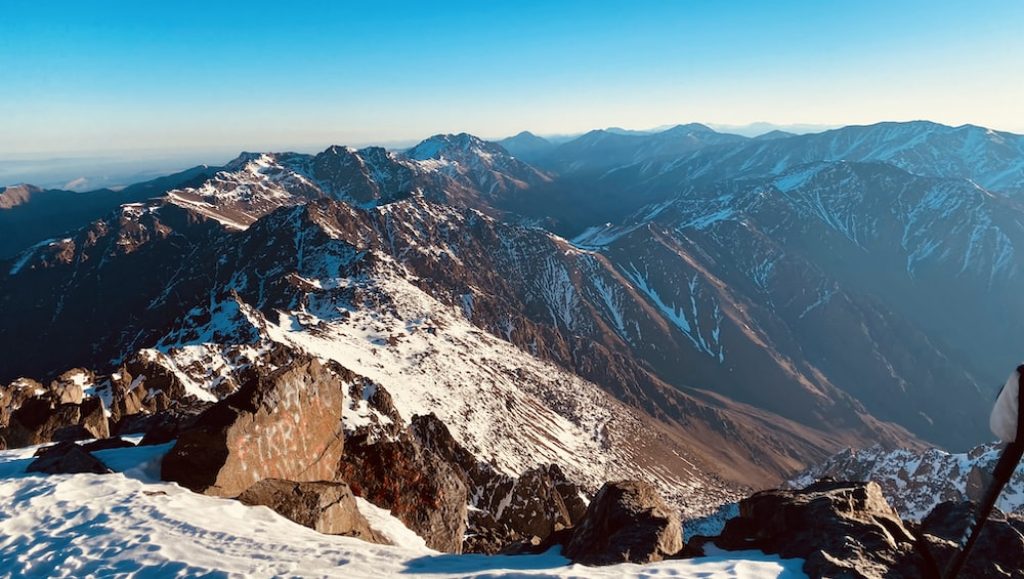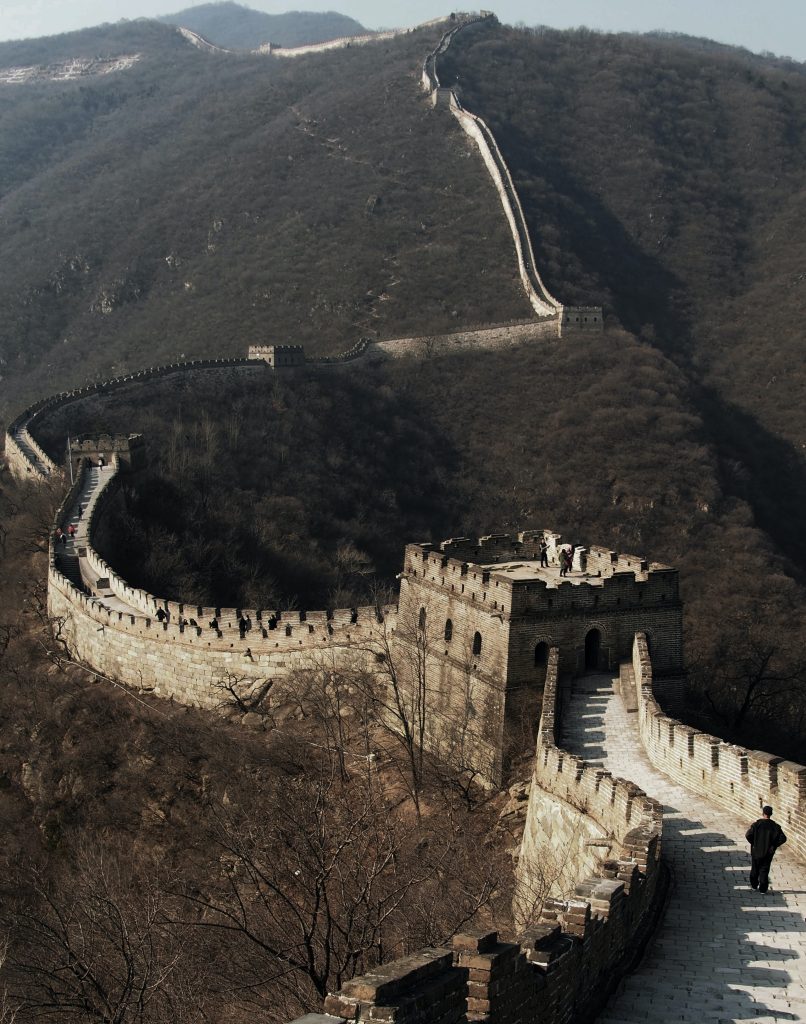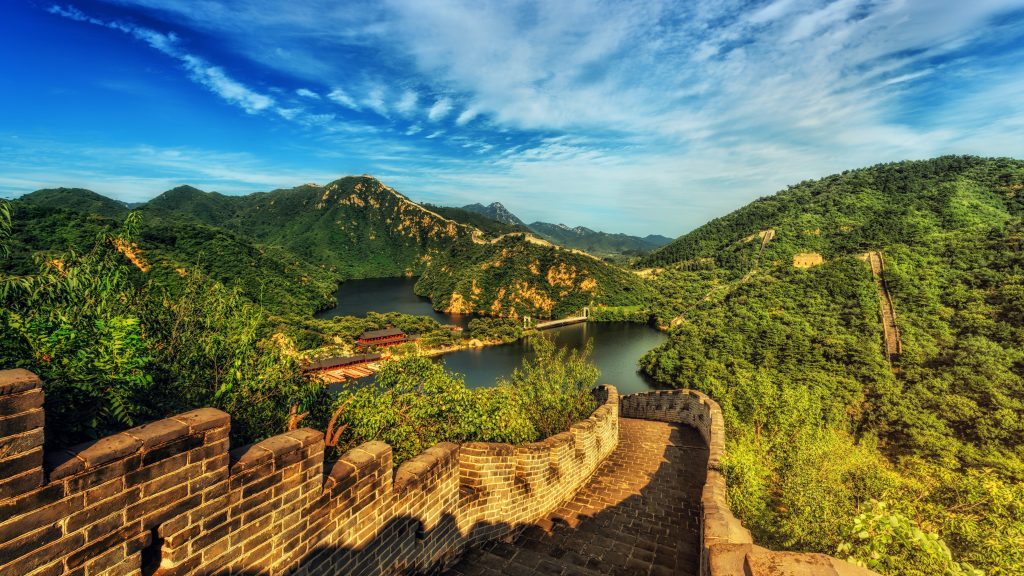It is no news that the Great Wall of China is one of the the seven natural marvels of the World. However, this Great Wall is not a wonder without its different sections. The Jinshanling section is one of those sections that many tourists and hikers visit.

Photo by William Olivier.
This article will reveal the history of the Jinshanling section, describe its sight, give details of food and accommodation, and let you know of the challenges of hiking this section.
Brief History
The Great Wall in the Beijing area is preceded by a wall range that winds from east to west at the northeastern limit of the city. This range is divided into Simatai, Jinshanling, and Gubeikou from east to west. The middle is referred to as the Jinshanling Great Wall.
The Jinshanling Great Wall, situated in Luanping County and roughly 130 kilometers from the Bejing metropolitan region, is only surpassed by the Badaling Great Wall in grandeur. This portion was named because it was constructed on the Bigger and Smaller Jinshan Mountains. It is split into two sections: the Jinshanling section and the Wang Jing Lou section. Jinshanling portion connects Simatai in the east and is almost seven kilometers (4.4 miles) long. The highest point in this area is Wang Jing Lou which is reached by a steep staircase that ascends to around 900 meters (almost 3,000 feet) above sea level.
The Jinshanling section was created in the late Ming Dynasty (1368–1644), as opposed to other areas in Beijing, and the architects enhanced the earlier structures in other areas and provided an array of more advanced protective structures to this area. For instance, barrier walls are vertical rows of walls attached to the central portion of the Wall to deter attackers who have reached the top of the Wall from continuing their assault. Guarding soldiers may crouch behind these fortifications and be protected from direct assaults. Three rows of archers can shoot simultaneously thanks to bell-mounted shooting holes incorporated into crenelated battlefields. The horse-block fortifications were built on ramps inside the pass, preventing both opposing horses and men from climbing to the summit of the Wall. All of these ideas have improved this fortification’s ultimate protective capacity.
Description of the Sight

Photo by Rita Chou on Unsplash
The Jinshanling Great Wall is one of the most picturesque and Instagrammable portions of the Wall. It is mainly used for trekking and photography, and its 11km length includes 67 watchtowers and some steep staircases. The General Tower, an outstanding representation of the military protection structure, the Dajinshan and Xiaojinshan Towers with their sophisticated design, and a sizable structural relief artwork covered at one of the towering structures are only a few outstanding architectural elements in this section.
Ways to Get There
Depending on your time and financial constraints, there are a few methods to go to the Jinshanling section of the Great Wall.
You might think about using a public bus. It makes sense for you to travel to Wangjing West Railways. Using the subway is simple; just board Line 13 or 15. Ensure you allow extra time for this trip because the subway can be very crowded early in the morning. You must exit the railway station by Exit B or D, then cross the street to the bus terminal. Line up and purchase your ticket at the head of the line to board bus 980, which travels to Jinshanling. A staff person will wait to accept your payment, so ensure you have cash. The price of a ticket is 50RMB. (2023)
Be sure you arrive on time because the bus doesn’t stay around for long once it comes at 8.20 a.m. The estimated two-hour travel time includes a brief break at a gas station.
Hiring someone to drive is another means of traveling to Jinshanling. The helpful locals frequently pick you up at your hotel, take you to the entryway, wait for you all day, and then transport you home. It would be fantastic if you could split this expense since it will typically cost you 800RMB. It is also an excellent bargain considering the time and gasoline required.
Undoubtedly, a guided tour is the best option for seeing the Jinshanling part of the Great Wall. A tour guide is not a wrong choice if you’re concerned about getting there alone, have kids with you, or are unsure how to accomplish it.
Details on hiking the Jinshanling section of The Great Wall of China
You could skip the need for a passport to get a ticket to Jinshanling, but you can carry yours just in case. Tickets for other parts of the Great Wall cost the same as those for Jinshanling. If you don’t want to climb the entire way, the Jingshanling Section features a cable vehicle that travels across and down the mountains.
You can take various routes depending on how much time you have to spare and your degree of fitness. Most hikers enter through the main gate and leave through the east gate. You can ascend by hiking or using a cable car. You can also begin from the main entrance and climb to the western area.
You can hike in two to three hours, depending on your chosen path. It takes about 15 minutes to walk from the final tower to the East Gate. You can see small Chinese women selling beer, water, snacks, and souvenirs in various guard towers; it’s noteworthy to observe that they trek up the Wall daily to do so.
When to Go: Weather and Season
The weather can be pretty harsh in northern China—scorching hot or bitterly freezing! Plan your trip carefully to minimize any unwanted discomfort when scaling the Wall. Spring and early fall are the optimum seasons to visit the Jinshanling section of the Great Wall of China.
The average temperature during these times ranges from the low to the mid-20s Celsius (mid-70s Fahrenheit). This should ensure you won’t have excessive sweating or heat stroke while hiking along the portion. It is not advisable to visit during the summer because it can get as hot as a hundred degrees Fahrenheit ( forty degrees Celsius).
Severe storms are also frequently present in July and August, ruining your trip and making hiking extremely risky. There are fewer chances of rainfall from about March to May and the end of September to early October.
Visiting the Jinshanling section of the Great Wall during wintertime is not advisable, despite the lovely pictures available online. You might encounter a -4 Fahrenheit (-20 Celsius) cold, a biting wind, and incredibly dry air. Potential environmental hazards around the city are also likely to be higher. You might discover that the Wall is closed when you wish to visit because it’s unlikely to snow, and even if it does, the stones may be too slippery for a safe hike.

Photo by Johannes Plenio on Unsplash
Accommodation
Visitors have a variety of lodging alternatives along the Jinshanling Great Wall, including guesthouses and small hotels.
These lodgings provide hotel-style lodging in Jinshanling village, although with a more modest layout. The rooms provide hot water, air conditioning, and TVs (however, some rooms could not have TVs).
The rooms typically come with two separate beds. If you’re visiting with a handful of friends or kids, staying at one of these guesthouses will allow you to discover what living with a family is like.
When organizing your trip to the Jinshanling Great Wall, look at these surrounding attractions and reserve lodging in advance to guarantee a relaxing and pleasurable stay.
Food and Water
Bring at least two water bottles for four to five hours of hiking. Carrying nuts and raisins are also suitable for quick meals to keep your energy levels up.
For hikers, breakfast is a meal you should not skip because it offers the energy required to begin the walk. Before starting the hike, hikers should eat a nutritious breakfast at their lodging facility, including proteins, carbohydrates, and nutritious fats and oils. Breakfast suggestions for hikers include whole-grain bread, scrambled eggs, and oatmeal.
Lunch is also essential for hikers since it gives them the energy they need to keep going. After the hike, you can eat a Chinese lunch of fried chicken, pork, vegetables, and rice close to Jinshanling.
For hikers, dinner is essential since it gives them the energy they need to recover from their day’s journey. Hikers should not forget to pack protein-rich foods, carbohydrates, and nutritious fats for their evening meals. For supper, hikers are advised to choose among pasta, rice, and beans.
Snacks are essential for hikers since they give them rapid energy boosts that help them stay energized the entire time. Hikers are advised to include snacks such as nuts, candy bars, and raisins.
Since water keeps the human body hydrated and refreshed throughout the trek, it is the most important liquid beverage for hikers. Carrying enough water to last the duration of the climb is advised for hikers. Sports and electrolyte beverages are also advised to replace lost energy and electrolytes.
Challenges When Hiking the Jinshanling section of The Great Wall of China
The rough terrain is one challenge of hiking the Jinshanling section of the Great Wall of China. It’s crucial to wear adequate footwear and clothing and to descend gently to prevent any injury because the terrain is rough and includes loose pebbles and sand that can be slippery. If you routinely work out, you shouldn’t experience any problems with this trail. If you don’t exercise frequently, you can have leg stiffness and sore muscles for a maximum of two days following the hike.
Tips to know when hiking the Jinshanling section of The Great Wall of China
- Bring water and food: A modest bag filled with snacks and enough water for the lengthy trek will be helpful. Several merchants at each towering structure are hawking food and water at higher rates at the height of the season.
- Pick an appropriate route: The hiking may be taxing because of the frequent uphill and downhill hikes. You are not advised to hike for an extended period unless everyone in your group is physically fit. Pick the area that best suits your needs regarding time, physical condition, and points of interest.
- Most towers in the unrestored area are in danger of collapsing, making passage through them hazardous. Look for the paths that lead around the tower and return you to the Wall.
- Be appropriately dressed: Wear thick clothing and a fluffy coat to protect yourself from the chilly wind at the top if you plan to trek the Jinshanling Great Wall in the winter. You must protect yourself from the harsh sunshine in the summer by wearing a hat, sunglasses, and sunblock. Always be sure to put on a pair of comfy hiking shoes.
- After the hike, remember to stretch to ease the pain in your legs.
Potential Dangers
- Loose stones and debris: As you climb the Jinshanling section of the Great China Wall, you may encounter loose stones, and if you’re not careful, you could slip and hurt your leg.
- Dry region: The region around the Jinshanling section can be arid. You may quickly become thirsty and dehydrated. Having water by your side can always help avert this problem.
- Extreme weather conditions: Sometimes, the weather condition in Jinshanling can be severe, even when it shouldn’t be. Proper clothing can help solve this danger.
- Limited Facilities: Some sections of the Great Wall, particularly the more remote or less touristy areas, may have limited facilities such as restrooms, food stalls, or emergency services. It’s important to carry enough water, snacks, and any necessary medications. Additionally, having a map or a guidebook can be helpful in navigating the area.
Conclusion
You can fully immerse in history, take in stunning scenery, and partake in outdoor activities by visiting Jinshanling Great Wall. Jinshanling offers a distinctive and unforgettable experience, regardless of whether you walk, camp, or freely explore the region.
You may make the best possible use of your visit to this famous portion of the Great Wall of China with careful planning and consideration of the abovementioned suggestions.

